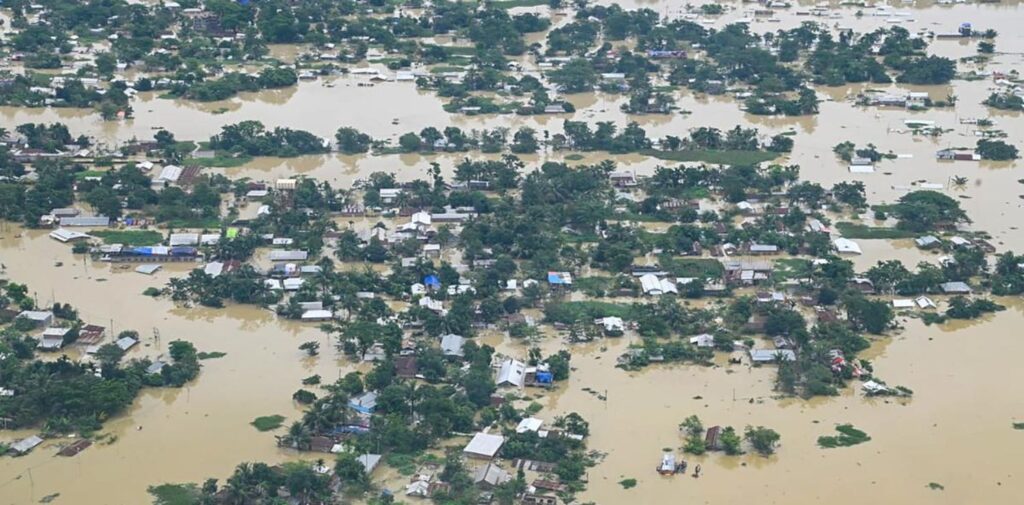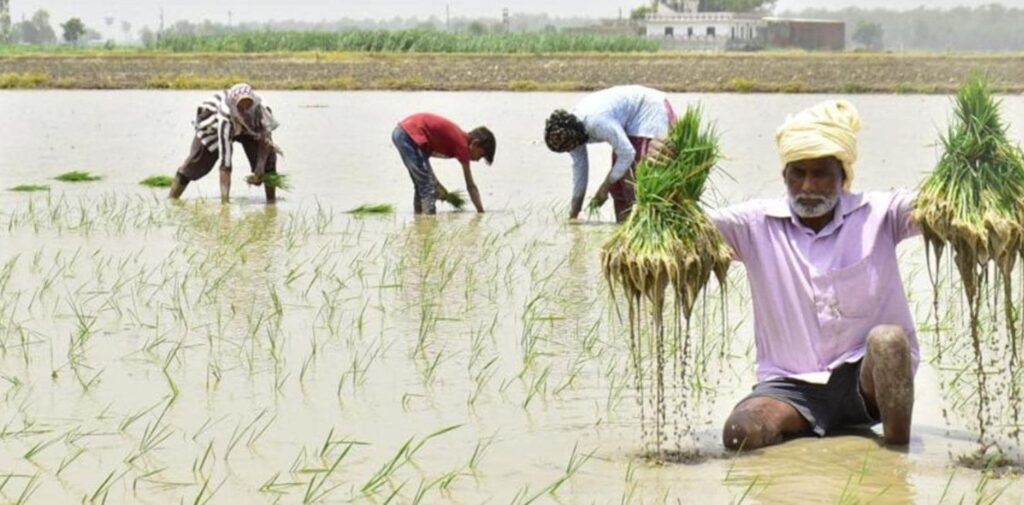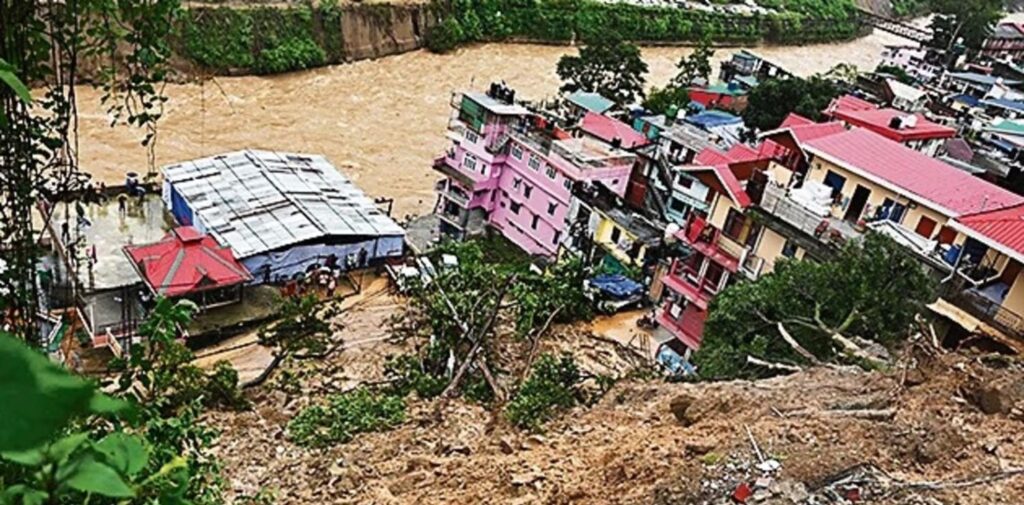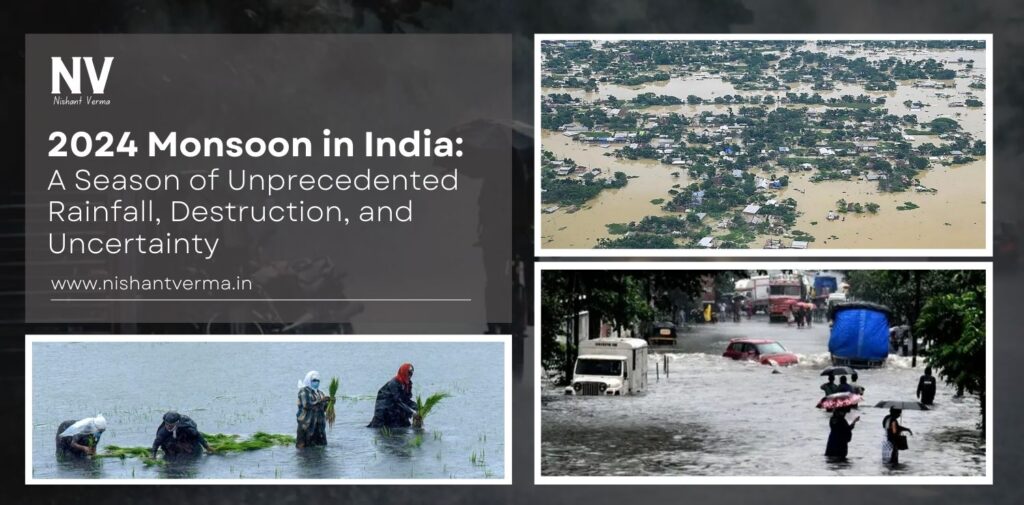The monsoon in India has always been a lifeline for agriculture, water supply, and overall economic health. However, in 2024, this lifeline turned into a harbinger of destruction and uncertainty. The rains have not only been unusually intense but also prolonged well beyond the typical monsoon period, causing catastrophic impacts on life and infrastructure across the nation. This year’s situation underscores the growing threat of climate change, which is altering weather patterns and intensifying natural disasters.
A Monsoon in India Out of Control: What Went Wrong?
The 2024 monsoon season, which usually withdraws by mid-September, extended into October, creating havoc across the country. While some regions like Maharashtra and Gujarat experienced torrential downpours, other areas such as the Northeast faced severe flooding. Assam has seen over 24.5 lakh people affected by floods, with major rivers flowing above danger levels. In addition, the Kaziranga National Park, a UNESCO World Heritage site, reported its worst flooding in recent years, with several wild animals drowning or injured during rescue operations.
The delayed retreat and erratic distribution of rainfall have become a growing concern. This is not just a one-time anomaly but a trend that has been emerging over the last decade. Climate scientists attribute these changes to several factors, including warmer ocean temperatures and the increasing influence of climate change. The result has been a disruption of traditional monsoon patterns, with heavy rainfall now concentrated over shorter periods, followed by prolonged dry spells. This imbalance has not only overwhelmed existing water management systems but also left farmers struggling to adapt to a changing climate.

Impact on Agriculture and Economy: A Looming Crisis
The extended and heavy monsoon has hit India’s agricultural sector hard. The Kharif season crops, which rely on a well-timed retreat of the monsoon, are particularly vulnerable. This year, fields meant for harvest have been inundated with rainwater, which threatens the yield of staples like rice, maize, and pulses. Even though a record 408.72 lakh hectares of paddy were sown in 2024, up from 393.57 lakh hectares in 2023, the excess rainfall means that a good yield is far from guaranteed.
Moreover, with the unseasonal rains soaking fields and creating waterlogging, farmers are unable to carry out harvesting activities, leading to a significant delay and a potential reduction in crop quality. The Ministry of Agriculture has already reported damage to over 33.9 million hectares of cropped area due to extreme weather events between 2015-2022, and the situation this year is expected to be worse.
The agricultural crisis has led to food inflation soaring above 8 percent since May 2024, with rural inflation outpacing urban inflation for nearly a year now. Agricultural growth, which stood at 4.7 percent in the previous financial year, has slumped to a mere 1.4 percent in FY24. This decline in agricultural productivity is a direct consequence of the erratic monsoon, and it poses a significant threat to India’s food security and rural livelihoods.

Infrastructure and Human Cost: A Season of Unmitigated Devastation
The impact of the extended monsoon on infrastructure has been devastating. Roads, bridges, and homes have been washed away in several states, leaving thousands homeless. The floods in the Northeast, particularly in Assam and Manipur, have destroyed over 3,300 homes and left 209 completely ruined. Critical public utilities, including drinking water facilities, have been severely damaged, creating a humanitarian crisis in the flood-hit regions.
Urban areas have also borne the brunt of the unrelenting rain. Cities like Mumbai and Delhi have seen waterlogging and flash floods that brought life to a standstill. The existing drainage systems in most cities were unable to cope with the sudden downpours, leading to pluvial floods and traffic paralysis. The damage to infrastructure is estimated to run into thousands of crores, adding further strain to state and central government resources.

The Science Behind the Chaos: Climate Change and Shifting Monsoon Patterns
The erratic monsoon of 2024 can be traced back to broader climatic shifts. Climate scientists point to rising sea surface temperatures in the Indian Ocean, which have increased moisture levels in the atmosphere, leading to heavier downpours. The influence of phenomena like El Niño and La Niña has also become more pronounced, adding to the volatility of weather patterns.
Characterized by the warming of the Pacific Ocean, typically leads to weaker monsoon seasons and drought-like conditions in India. However, the transition to La Niña, marked by the cooling of the Pacific, has resulted in excess rainfall and flooding. This oscillation, combined with the larger effects of global warming, has created a situation where predicting the monsoon’s behavior has become increasingly challenging.
Looking Forward: The Need for a Resilient Future
As India grapples with this changing monsoon reality, the need for adaptive measures has become more urgent than ever. Agricultural practices must evolve to include more climate-resilient crop varieties, better water management, and efficient drainage systems. Urban planning needs to prioritize flood management and infrastructure resilience to prevent future disasters.
At a policy level, there is a pressing need for better coordination between meteorological agencies, disaster management authorities, and local governments to prepare for and respond to extreme weather events. The lessons from 2024 should serve as a wake-up call for all stakeholders to invest in climate adaptation and mitigation strategies to safeguard lives, livelihoods, and the nation’s economic stability.
In conclusion, the 2024 monsoon has been a season of unprecedented challenges. As the country looks forward to rebuilding and recovering, it is clear that addressing the root causes of these changes—climate change and unsustainable practices—must be a top priority for policymakers, scientists, and citizens alike.




